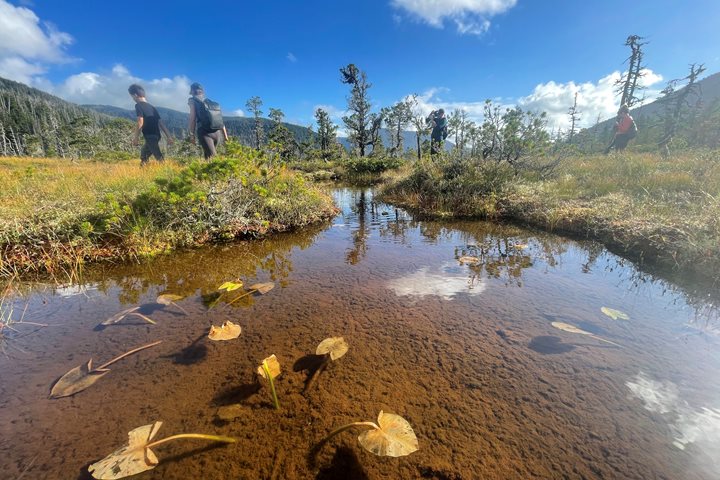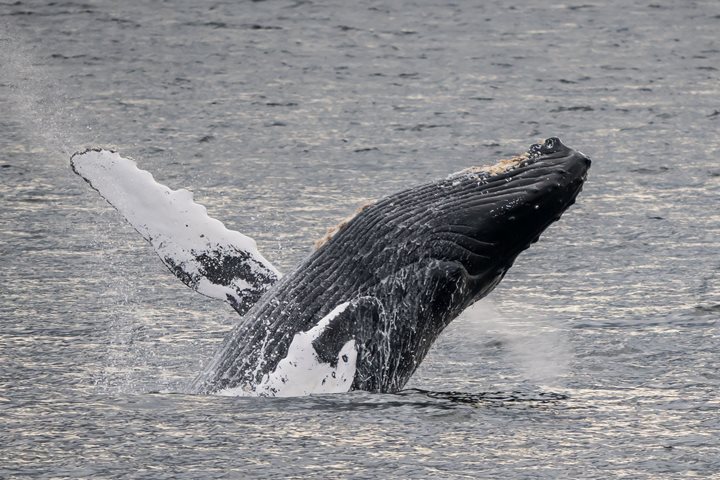Glacier Bay National Park is a remarkable combination of mountain and sea. Lorded over by the nearly three-mile-high Mount Fairweather, this expansive bay is teeming with enough wildlife to distract us from the world-class scenery and the real world considerations we all leave back home. As the second largest tract of terrestrial wilderness left on our planet, Glacier Bay National Park is a fundamentally important Alaskan experience. It is also a great reminder of the transformative power of time and natural processes.
Today we watched both male and female Steller sea lions laze on South Marble Island when just a few years ago it was almost only males. And before that there were no sea lions. Before that, no birds. And even further back it was totally bare. We are seeing the rebirth of a thriving ecosystem fueled by the very thing that decimated this region, glaciers. Most recently shaped by the now defunct Grand Pacific glacier, Glacier Bay has been recovering from its icy scour by leaps and bounds for several hundred years.
Distracted by the curious wanderings of a mountain goat strolling along an intertidal shore, we were alerted to a more predatory presence with a subtle, yet oh-so-exciting poof that only a cetacean can generate. Our eyes followed the low exhale towards the stern and were met by a telltale spread of black dorsal fins piercing Tidal Inlet’s reflective waters. Traveling in a tight pack of 5 to 7 animals, this family group showed all the signs of being mammal-eating killer whales, with their pointy dorsal fins and sneaky disposition. We now call them Bigg’s killer whales as their unique lifestyle, distribution, and genome warrants a distinguished title referencing the scientist whom devoted his life not to fortune, but to the one eternal currency: knowledge.
Further afield, another hunter peered from the fireweed and beach grass just long enough for sharp eyes to spy one of Glacier Bay’s more recent canid resident. Often thought of as pack hunters, many of Glacier Bay’s wolves can be seen alone and often scouring the shore for their next meal. These are not your normal wolves. Dark coated and fish eating, they make their living in a bear-like way foraging through the intertidal and even capturing spawning salmon during the long summer days.
Alaska has always been teeming with wildlife. Today we expended great time and money to reach its far-flung shores and it paid off handsomely. In years past, Alaska was seen only for its exploitative natural resources and not for its natural beauty. Greedy eyes saw sea otters for their soft pelts and the land for the gold it held so tight. Even in the ‘untouched beauty’ of Glacier Bay National Park, people have tried to find their fortunes amidst the monolithic walls of its western shore but all have failed. Other parts of Alaska saw incredible fortunes carried down the hillsides on the backs of countless toiling miners but this section of wild coast keeps its superficial prizes held tightly and watched over by the true currency in the form of sea lions, mountains, killer whales, and puffins. Searching for a glimmer of gold in a slough of dreary regrets, many have failed yet the land and the wildlife continued, and continues, to endure.
As we steam down-bay on a quintessential Alaskan evening and reflect on the day’s events, the true, honest wildness of our planet has a therapeutic effect upon our psyche. Center has been restored. Priorities realigned. Several have tried to make fortunes off of Glacier Bay’s wilderness. Some have succeeded, but most eventually failed. Nature has a way of defeating even the most steadfast. Where human ingenuity and dedication waivers, nature ultimately succeeds.







